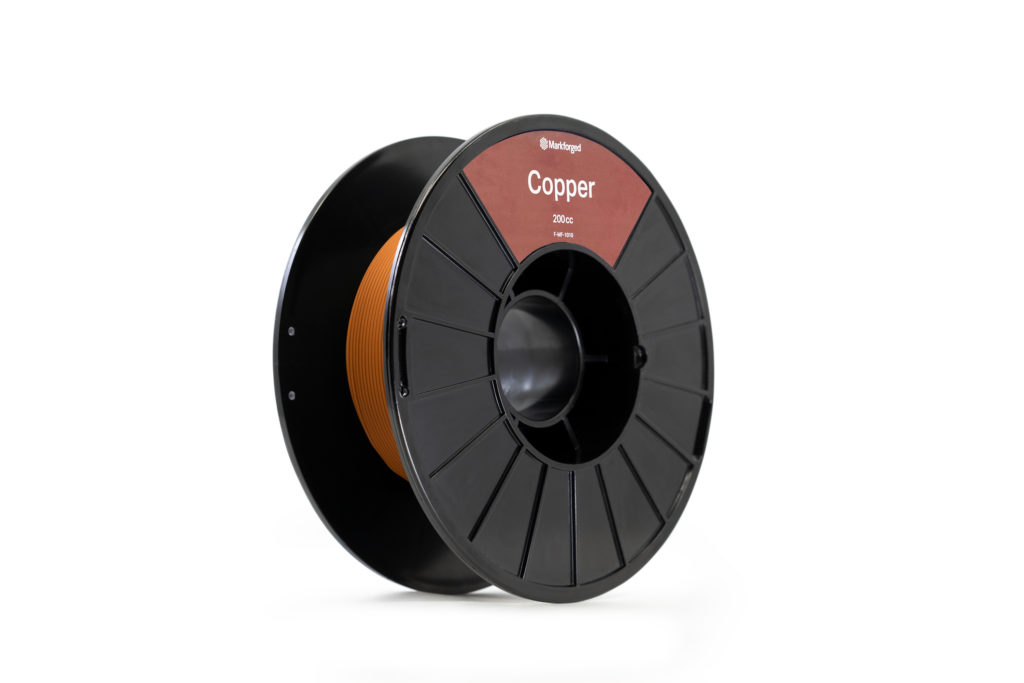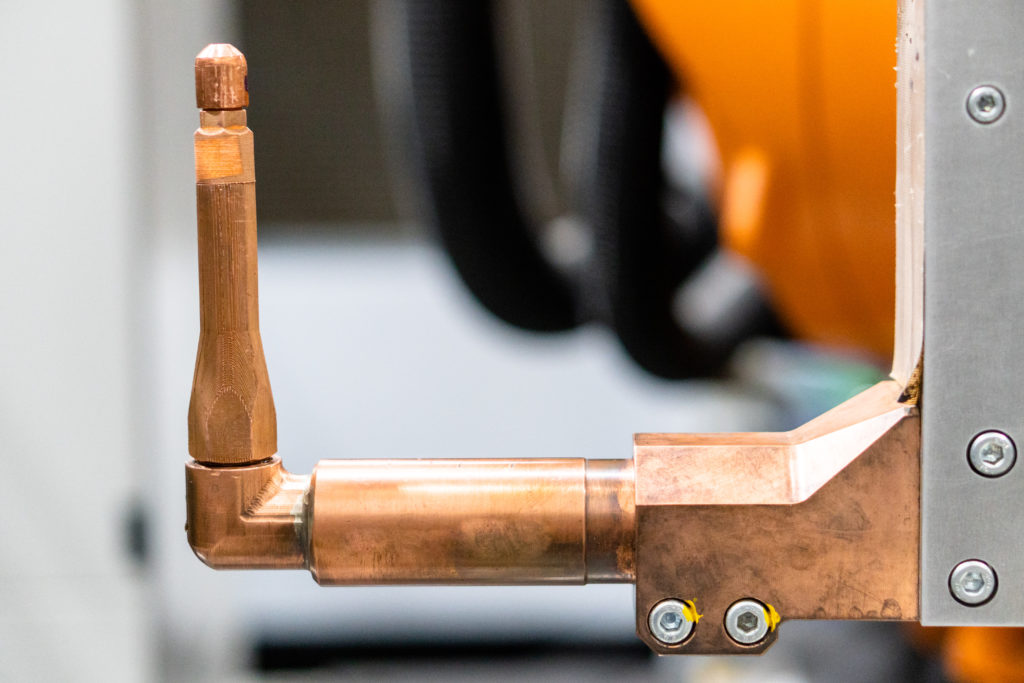Markforged has announced the release of a new metal material for its Metal X 3D printer: copper. Due to the comparatively low-cost of the Metal X system, this makes Markforged technology the most affordable method for 3D printing copper in the industry.
Copper has some very niche uses, mostly associated with its great thermal and electrical conductivity; however, due to its high reflectivity, copper is extremely difficult to work using laser-based metal 3D printing systems. As a result, the industry has often relied on copper alloys to tone down the metal’s luster. In cases where pure copper is 3D printable, the systems that can process (EBM from GE Additive and DED from Optomec) it are typically quite expensive.
The Metal X system is one of two low-cost machines that 3D print metal using bound metal deposition (BMD) technology: depositing metal-bound plastic filament to create green parts that must be washed in a debinding station and then sintered in a furnace. This brings down the cost of the complete package (including post-processing equipment) to about $100,000 to $160,000. The materials themselves are meant to be lower cost as well, as they are usually metal powders from the much larger metal injection molding (MIM) industry that have been qualified for the BMD process.
Additionally, because the initial deposition process relies on technology similar to desktop FDM 3D printers, it is much easier than metal powder bed fusion (PBF) systems. While the post-processing steps may seem burdensome to the uninitiated, they are common in MIM and the printer itself is likely to be a lot safer and less complicated than PBF.
The ability to print with copper at a lower cost can be useful in applications that require high thermal or electrical conductivity. While NASA is 3D printing copper for rocket engines, more common and smaller uses in industrial manufacturing include induction coils. Induction heating relies on passing electromagnetic currents through conductive metal elements for the purpose of generating heat. This highly controllable process is used in such applications as welding, brazing, forging, cooking and injection molding.
As it stands, traditionally made copper inductor coils have relatively short lifespans as joints between welded elements experience repeated stress every time they are heated and cooled. Several firms in the 3D printing space (the GH Group, GKN Additive and PROTIQ, to name a few) have learned that 3D printing copper induction coils can increase the lifespan of the parts by two to three times, while also opening up new design possibilities thanks to the geometric complexity allowed with 3D printing.
In the automotive industry, copper is used for spot welding; however, having parts made for welding jobs can take months and cost thousands of dollars. Markforged demonstrated the utility of its new material to make spot welding parts for a large automotive manufacturer.
The auto company tested how copper shanks made using the Metal X would hold up while performing typical welding operations. The company found that the 3D-printed shanks performed just as well and showed the same resistance as traditionally made counterparts. Moreover, they believe that using the 3D-printed components could reduce lead times by 12 times and part costs by six. As a result, the company plans to introduce the parts to the production line.
The maintenance manager of the automotive manufacturer was quoted as saying, “[O]ur experience with 3D printed copper has been incredible – especially when looking at its conductivity and structural stability. And now that we’ve successfully evaluated weld testing, we plan on expanding our metal 3D printing capacity for this and other metal components. 3D printing copper with Markforged is faster and more cost effective than purchasing complex machined components, and we expect it to help us mitigate downtime exposure and reduce inventory costs by $200,000 a year using only one Metal X system.”
The latest material from Markforged is a useful indicator of the rapidly evolving metal 3D printing space, which is seeing new materials qualified for metal 3D printing processes at an exciting pace thanks in part to bound metal printing technologies like Metal X. As binder jetting systems from HP and Desktop Metal begin entering the marketplace, the larger manufacturing industry will begin changing in ways we may not have even predicted.
The post Markforged Introduces Pure 3D Printable Copper appeared first on 3DPrint.com | The Voice of 3D Printing / Additive Manufacturing.



